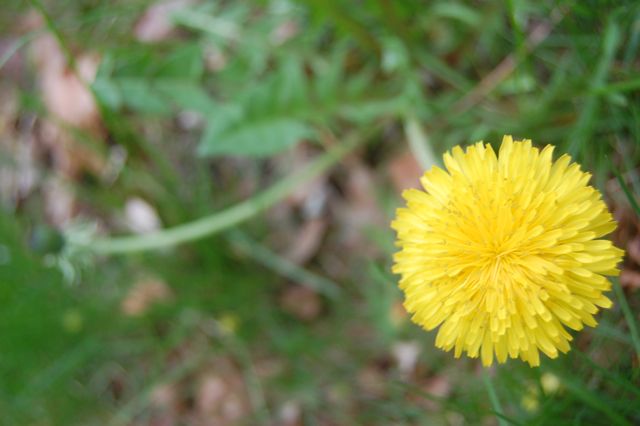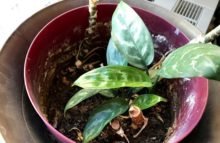Actually, they’re Dynamic Accumulators. So what the heck is a dynamic accumulator, you ask? They are some of the most powerful plants you can have in your garden. They are basically free, organic, living fertilizer, and they improve your soil due to their ability to mine important nutrients from within the soil or air.
Jane Hayes, from evergreen.ca, says this about dandelions:
“The nutrients gets stored in the leaves, which drop to the soil and make those nutrients available to other plants. Dandelion’s long taproot is especially good for aerating soil and the plants help keep organic matter in dry soil. They’re there for a reason. Nature wants them doing the job they’re doing.”
Dynamic Accumulators are often the first plants to colonize an area after a fire, or after an area of bare soil is uncovered. Try killing off a section of your lawn for planting, by covering it with several sheets of corrugated cardboard, or an old carpet. (plus some rocks to weigh it down & some mulch to camouflage the cardboard/carpet ugliness) Once you lift it off, if you leave it on its own, the first plants that would grow on their own would be the dynamic accumulators. (Let’s call them DAs, for short)
DAs can also be nitrogen fixing plants, like the white clover we keep going on about. While nitrogen fixers like clover and legumes get nitrogen from the air, and make it available in soil, other DAs, like dandelions, bring up nutrients from within the soil, which then become available in the plants’ leaves.
You can use DAs to increase a specific nutrient in your soil, as a cover crop, as a mulch, add them to compost, or grow them as companion plants.
 Comfrey is another DA powerhouse, bringing all these nutrients to the mix: Silica, Nitrogen, Magnesium, Calcium, Potassium, Iron. Comfrey is super easy to grow and is an essential plant to have right next to your compost pile. It grows very tall and leafy — you can actually hack bunches of leaves off the plant, without it batting an eye, and toss them right in the compost pile, or use the large, flat leaves as a mulch.
Comfrey is another DA powerhouse, bringing all these nutrients to the mix: Silica, Nitrogen, Magnesium, Calcium, Potassium, Iron. Comfrey is super easy to grow and is an essential plant to have right next to your compost pile. It grows very tall and leafy — you can actually hack bunches of leaves off the plant, without it batting an eye, and toss them right in the compost pile, or use the large, flat leaves as a mulch.
It’s a perennial, so comes back each year. While it does spread, it doesn’t spread as rampantly as something like mint, and stays in a nice neat clump. Every garden should have some comfrey. It also gets little blue flowers that bees love. This year I am trying some pink comfrey, that I got from Richters.
Take a look at this useful chart of dynamic accumulators. I discovered it, oddly enough, on the site of a very nice looking permaculture B&B on Prince Edward Island. It’s called the Romany Rest, and it’s making me want to plan a trip to PEI, just to check it out.
 By the way, the dynamic accumulator terminology comes from Permaculture, an increasingly popular way of gardening (and living) that emphasizes the use of renewable natural resources and the enrichment of local ecosystems. For more info on gardening with permaculture, this book, The Permaculture Garden, looks like an excellent resource.
By the way, the dynamic accumulator terminology comes from Permaculture, an increasingly popular way of gardening (and living) that emphasizes the use of renewable natural resources and the enrichment of local ecosystems. For more info on gardening with permaculture, this book, The Permaculture Garden, looks like an excellent resource.
I know I’m going to feel happier looking at dandelions from now on, whether they’re in my lawn or flower garden. They are dynamic accumulators, and they’re working their leaves off for me, for free.
Ralph Waldo Emerson: What is a weed? A plant whose virtues have not been discovered.





2 comments
Oh no, am I going to have to rethink my hatred of dandelions, painstakingly imparted for years by my mom who actually paid my sister and me for each dandelion flower we picked? (I forget if it was a penny each or 10 for a penny. Probably the latter, because we picked a whole big black garbage bag full. It worked too; our 100 acre property had very few dandelions after a while.)
I guess yes, I do need to rethink my hatred of dandelions. What’s next, a revelation about the virtues of garlic mustard?
No, no, not garlic mustard!
But your mom had the right idea about the dandelions — it’s the flower with its seeds that’s the main villain.
Incidentally, I used to try to bribe my kids and the neighbour kids to do the same thing. They never bit. Maybe I needed to tempt them with 100 acres worth?
Helen